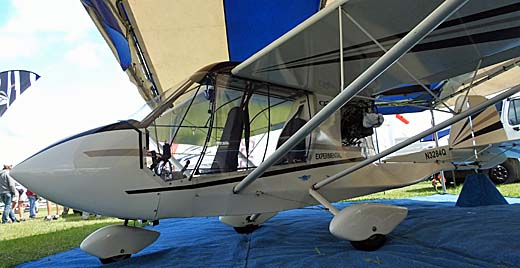
One essential visit at AirVenture Oshkosh 2018 was to the Quad City booth in the Fun Fly Zone. This iconic company in the very light aircraft sector is celebrating 35 years in business. Hearty congratulations to this midwestern USA company for supplying highly affordable aircraft for more than three decades. Even after the loss of their founder, Dave Goulet, the enterprise has carried the torch to the delight of many pilots. Today, after all those years, the company can report more than 4,000 Challengers are flying. Along with a few other giants of light aviation, this is one of the great success stories in fly-for-fun aircraft. All have built as kits and one reason for this achievement is care in making the kit an easy project. For its entire existence, Quad City has followed an admirable system: “Our philosophy is for [the factory] to do all the important and demanding structural work, including installing the controls.


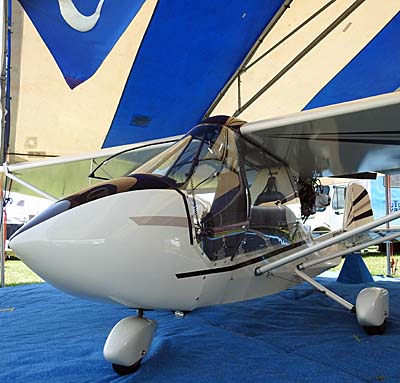 One essential visit at
One essential visit at 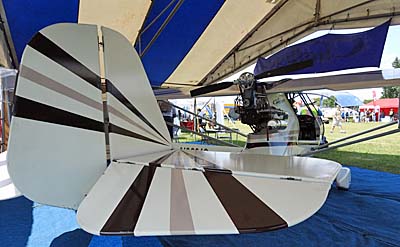 Quad City’s partner, National Ultralight, said “[Our new] EL-65 is a long wing, two seat, high power, high lift aircraft well suited for amphibious floats, heavy loads and high density altitudes. The new ES-65 is a clip wing derivative of the EL-65 optimized for speed with a wing four feet shorter.
The first single seat Challenger ultralight a third of a century ago evolved into a full line of kit-built aircraft with a wide mix of models, options and accessories. A new Challenger 103 expands the line back to the grass roots and the new Challenger Light Sports are the line's most dramatic ever step forward. (Note that Quad City does not offer a fully-built SLSA model despite use of the Light Sport term; all Challengers are kits.)
Quad City’s partner, National Ultralight, said “[Our new] EL-65 is a long wing, two seat, high power, high lift aircraft well suited for amphibious floats, heavy loads and high density altitudes. The new ES-65 is a clip wing derivative of the EL-65 optimized for speed with a wing four feet shorter.
The first single seat Challenger ultralight a third of a century ago evolved into a full line of kit-built aircraft with a wide mix of models, options and accessories. A new Challenger 103 expands the line back to the grass roots and the new Challenger Light Sports are the line's most dramatic ever step forward. (Note that Quad City does not offer a fully-built SLSA model despite use of the Light Sport term; all Challengers are kits.)
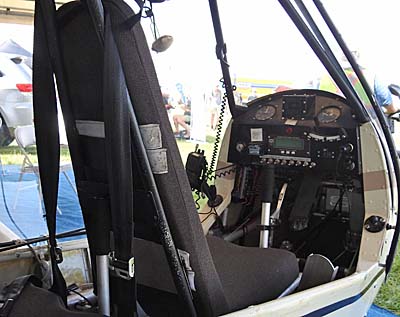 “Affordable” is a variable term that depends on an individual’s budget. What one pilot might afford another cannot. Yet how about this offer from Quad City? “Quick-build packages including airframe, instruments, engine, prop, […everything you need] start at $29,975.” I have to judge that a remarkable bargain in light aviation.
“Affordable” is a variable term that depends on an individual’s budget. What one pilot might afford another cannot. Yet how about this offer from Quad City? “Quick-build packages including airframe, instruments, engine, prop, […everything you need] start at $29,975.” I have to judge that a remarkable bargain in light aviation.
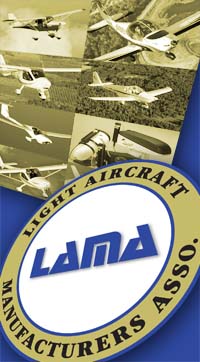 While this space is usually dedicated to cool new airplanes — not boring government policy reviews …yawn! — this article will provide some rays of light to an industry approaching its 15th birthday (in September 2019). I think some of this may surprise you.
While this space is usually dedicated to cool new airplanes — not boring government policy reviews …yawn! — this article will provide some rays of light to an industry approaching its 15th birthday (in September 2019). I think some of this may surprise you.
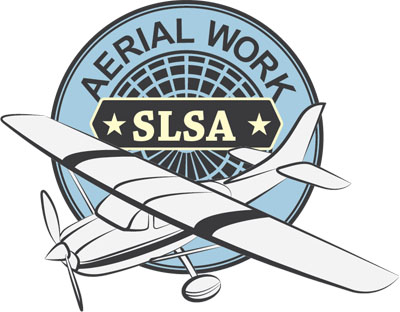 After many meetings with high-level FAA executives and project managers, we are pleased to report that ALL these objectives and one more — increasing the gross weight of LSA — are included in FAA’s present actions regarding rule making. Note that gross weight will probably be determined by a new system other than a fixed-weight number but the exact formula is pending while FAA finalizes their regulation plans.
To repeat, ALL these objectives are on FAA’s list for inclusion in eventual rule making.
“Eventual” is a key word, however…
Work Far from Done
In 2018, neither aircraft manufacturers nor pilots can take advantage of these new opportunities. While the future appears to hold great promise, LAMA and USUA have sought a faster solution. The changes sought should broaden the appeal of LSA leading to not only more sales but a higher value for the aircraft you buy.
After many meetings with high-level FAA executives and project managers, we are pleased to report that ALL these objectives and one more — increasing the gross weight of LSA — are included in FAA’s present actions regarding rule making. Note that gross weight will probably be determined by a new system other than a fixed-weight number but the exact formula is pending while FAA finalizes their regulation plans.
To repeat, ALL these objectives are on FAA’s list for inclusion in eventual rule making.
“Eventual” is a key word, however…
Work Far from Done
In 2018, neither aircraft manufacturers nor pilots can take advantage of these new opportunities. While the future appears to hold great promise, LAMA and USUA have sought a faster solution. The changes sought should broaden the appeal of LSA leading to not only more sales but a higher value for the aircraft you buy.
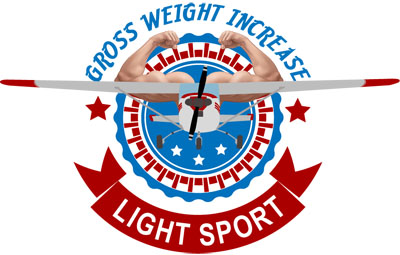 We are proud of what we’ve been able to accomplish on the skinniest of budgets but we did not fly solo.
We also sought, and received, support for our initiatives from big organizations such as EAA, AOPA, and GAMA. While these giants of aviation first serve their own members, LAMA is 100% focused on light aircraft.
Rulemaking will consume at least three years and it could be even longer before such rules go into force, assuming no changes of present course.
Three to five years is a long time to wait for change for an industry not even 15 years old.
We are proud of what we’ve been able to accomplish on the skinniest of budgets but we did not fly solo.
We also sought, and received, support for our initiatives from big organizations such as EAA, AOPA, and GAMA. While these giants of aviation first serve their own members, LAMA is 100% focused on light aircraft.
Rulemaking will consume at least three years and it could be even longer before such rules go into force, assuming no changes of present course.
Three to five years is a long time to wait for change for an industry not even 15 years old.
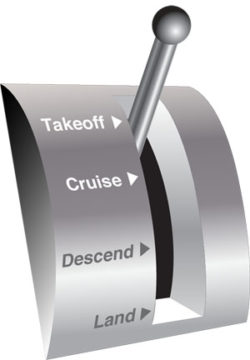 So, following a direct request from top FAA executives, we submitted a comprehensive business case for a program that we hope will much sooner allow manufacturers, dealers, owners, operators, and pilots to exercise the core-four-plus-one privileges.
The program we proposed is an evaluation and data-gathering period which will give FAA precisely what managers and executives say they need ("more data") in order to get approval to change current regulations.
LAMA’s plan will help industry and pilots but it will also help FAA.
Allowing industry and pilots to gain new opportunities under controlled circumstances can give everyone privileges in the near(er) term while generating valuable data for FAA to use in justifying regulation change.
LAMA and USUA are pleased to supply such a great outlook but caution that it took more than four years of hard work to get to this point and, as a much-revered author once wrote, "Anything can happen. Nothing has to happen." Nonetheless, we pledge to keep moving forward toward these goals.
So, following a direct request from top FAA executives, we submitted a comprehensive business case for a program that we hope will much sooner allow manufacturers, dealers, owners, operators, and pilots to exercise the core-four-plus-one privileges.
The program we proposed is an evaluation and data-gathering period which will give FAA precisely what managers and executives say they need ("more data") in order to get approval to change current regulations.
LAMA’s plan will help industry and pilots but it will also help FAA.
Allowing industry and pilots to gain new opportunities under controlled circumstances can give everyone privileges in the near(er) term while generating valuable data for FAA to use in justifying regulation change.
LAMA and USUA are pleased to supply such a great outlook but caution that it took more than four years of hard work to get to this point and, as a much-revered author once wrote, "Anything can happen. Nothing has to happen." Nonetheless, we pledge to keep moving forward toward these goals.
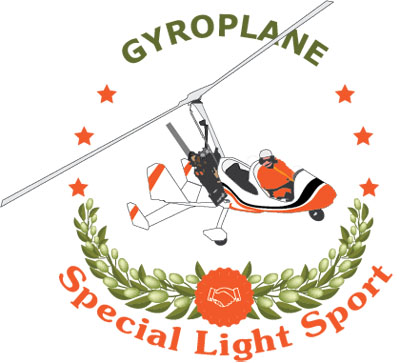
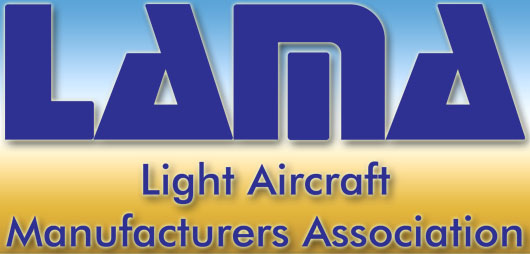
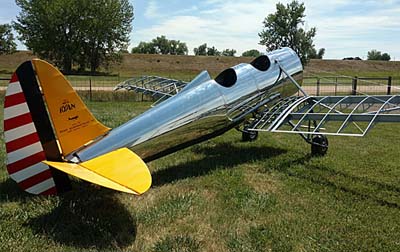 We simply had to do a video interview with the developer of the 1930s-era Ryan ST because of its fascinating history and its handsome good looks. If you love vintage aviation, this should grab your attention as it did mine.
Nick Pfannenstiel is a young developer with a mission, to create or, more accurately, re-create the Ryan ST. He began the design phase of his 95% scale Ryan ST in June 2015 and construction began in early 2016. By 2018, you see the aircraft is nearly finished form.
Ryan's ST featured two open cockpits in tandem seating with a semi-monocoque metal fuselage. A main steel ring forms the backbone of the Ryan ST replica but most of the fuselage uses aluminium alloy
We simply had to do a video interview with the developer of the 1930s-era Ryan ST because of its fascinating history and its handsome good looks. If you love vintage aviation, this should grab your attention as it did mine.
Nick Pfannenstiel is a young developer with a mission, to create or, more accurately, re-create the Ryan ST. He began the design phase of his 95% scale Ryan ST in June 2015 and construction began in early 2016. By 2018, you see the aircraft is nearly finished form.
Ryan's ST featured two open cockpits in tandem seating with a semi-monocoque metal fuselage. A main steel ring forms the backbone of the Ryan ST replica but most of the fuselage uses aluminium alloy
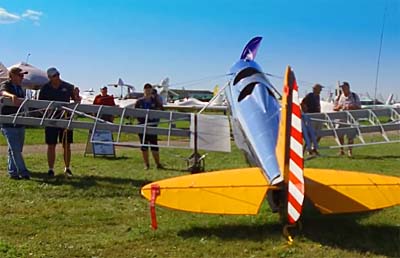 The project is not merely a personal fascination for Nick. He will be selling a builder's kit and specifically chose the 95% scale to make it enough lighter to use modern engines. Nick explains this further in the video. He expects first flight fairly early in 2019.
He plans to offer motor mounts for either D-Motor LF-39 or
The project is not merely a personal fascination for Nick. He will be selling a builder's kit and specifically chose the 95% scale to make it enough lighter to use modern engines. Nick explains this further in the video. He expects first flight fairly early in 2019.
He plans to offer motor mounts for either D-Motor LF-39 or 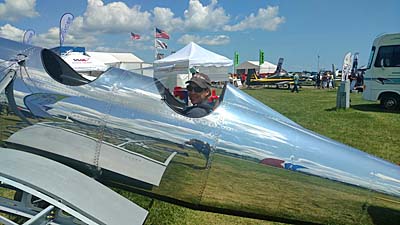 Thanks to Nick's effort, you won't have to spend nearly that much; he has established a price for his kit: $31,890, not including considerable effort to polish the aluminum as you see in the nearby photos. A quick-build option for $3,000 will likely be popular.
"We estimate that if a builder really splurges on the kit, he or she should be able to get in the air for less than $75,000," Nick estimated. Build time will exceed 1,000 hours but this is modern, CAD-designed kit.
Nick and his Timber Tiger Aircraft company are located in Brighton, Colorado.
Thanks to Nick's effort, you won't have to spend nearly that much; he has established a price for his kit: $31,890, not including considerable effort to polish the aluminum as you see in the nearby photos. A quick-build option for $3,000 will likely be popular.
"We estimate that if a builder really splurges on the kit, he or she should be able to get in the air for less than $75,000," Nick estimated. Build time will exceed 1,000 hours but this is modern, CAD-designed kit.
Nick and his Timber Tiger Aircraft company are located in Brighton, Colorado. 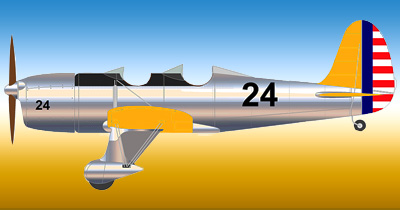 The first Ryan ST flew for the first time on June 8th, 1934 and production began the following year, when nine aircraft were delivered. Production rates remained low — about one aircraft every two weeks — but this changed in 1940 when deliveries to military forces began in earnest to support the war effort. Total production of civil and military aircraft before WWII numbered 315. Another 1,253 military versions were produced in '42-'43 totaling 1,568 aircraft of all models.
Hear Nick describe his creation in this video.
https://youtu.be/uLxKNwAkvZs
The first Ryan ST flew for the first time on June 8th, 1934 and production began the following year, when nine aircraft were delivered. Production rates remained low — about one aircraft every two weeks — but this changed in 1940 when deliveries to military forces began in earnest to support the war effort. Total production of civil and military aircraft before WWII numbered 315. Another 1,253 military versions were produced in '42-'43 totaling 1,568 aircraft of all models.
Hear Nick describe his creation in this video.
https://youtu.be/uLxKNwAkvZs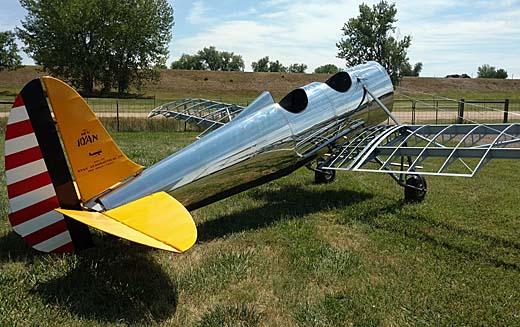
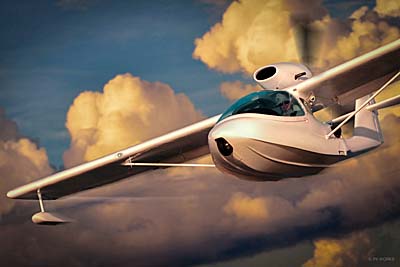 At present a few companies are actively delivering airplanes that have proven themselves over several years of operation. One of those is SeaMax, formerly delivered by a company known by its Portuguese name, Airmax Construções Aeronauticas.
Now, welcome the simpler SeaMax Aircraft.
The manufacturer of the SeaMax M-22 announced a company rebranding last week. As part of its strategy to enter into the U.S. market, the company changed its logo and named the company after its prominent aircraft model.
“Our new brand,
At present a few companies are actively delivering airplanes that have proven themselves over several years of operation. One of those is SeaMax, formerly delivered by a company known by its Portuguese name, Airmax Construções Aeronauticas.
Now, welcome the simpler SeaMax Aircraft.
The manufacturer of the SeaMax M-22 announced a company rebranding last week. As part of its strategy to enter into the U.S. market, the company changed its logo and named the company after its prominent aircraft model.
“Our new brand, 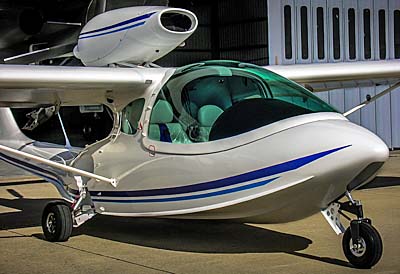 The company now known as SeaMax Aircraft reports manufacturing 152 of its amphibious aircraft. SeaMax M-22, a design by Miguel Rosario, has been delivered to more than 20 countries. In the last year the company established a presence in the U.S. market.
Manufacturing continues at its factory in the state of Sao Paulo, Brazil but the company now has facilities in Daytona Beach, Florida. SeaMax Aircraft is located on the campus of Embry Riddle Aeronautical University, which opened an incubator to encourage innovative companies that can also offer real-world experience to its student population.
"We have issued certification to some maintenance centers in the U.S. to provide technical assistance for our customers," reported Shalom. "Last month the company delivered and registered with FAA serial number 152, the first one under the new manufacturer’s name.
The company now known as SeaMax Aircraft reports manufacturing 152 of its amphibious aircraft. SeaMax M-22, a design by Miguel Rosario, has been delivered to more than 20 countries. In the last year the company established a presence in the U.S. market.
Manufacturing continues at its factory in the state of Sao Paulo, Brazil but the company now has facilities in Daytona Beach, Florida. SeaMax Aircraft is located on the campus of Embry Riddle Aeronautical University, which opened an incubator to encourage innovative companies that can also offer real-world experience to its student population.
"We have issued certification to some maintenance centers in the U.S. to provide technical assistance for our customers," reported Shalom. "Last month the company delivered and registered with FAA serial number 152, the first one under the new manufacturer’s name.
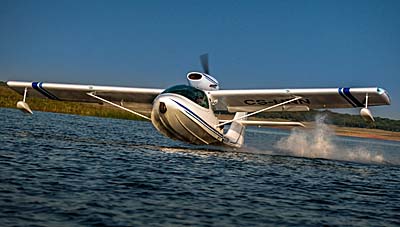 Naturally I want to include Searey and Aventura in identifying brands that are well established with long histories.
Naturally I want to include Searey and Aventura in identifying brands that are well established with long histories. 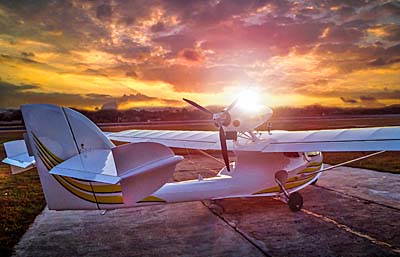 Seamax won aeronautical awards, such as the prestigious "Outstanding Commercial SLSA” at Sun 'n Fun in the United States and the Schneider Cup in Italy. It has been featured in more than 40 specialized magazines around the world.
Seamax pioneered as one of the early Light-Sport amphibious aircraft to win FAA acceptance in the category — it appears in the #63 spot on our popular
Seamax won aeronautical awards, such as the prestigious "Outstanding Commercial SLSA” at Sun 'n Fun in the United States and the Schneider Cup in Italy. It has been featured in more than 40 specialized magazines around the world.
Seamax pioneered as one of the early Light-Sport amphibious aircraft to win FAA acceptance in the category — it appears in the #63 spot on our popular 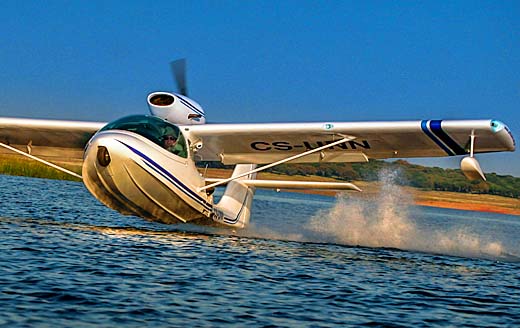
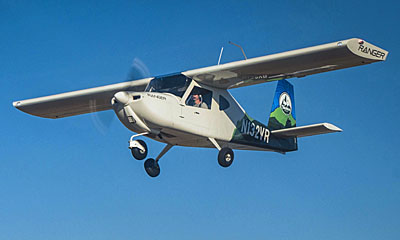
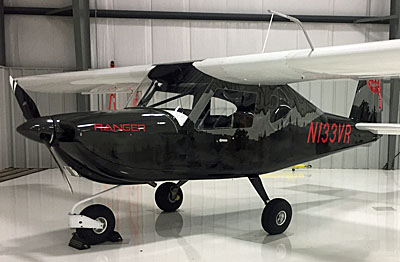 That's quite admirable for a fresh-out-of-the-gate design entering a marketplace with more than 140 Special Light-Sport Aircraft appearing on
That's quite admirable for a fresh-out-of-the-gate design entering a marketplace with more than 140 Special Light-Sport Aircraft appearing on 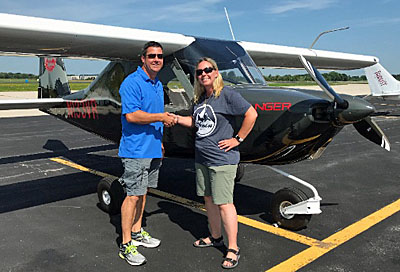 "Our team has been extremely busy since we've been back from Oshkosh," added Amy. "Traveling to the show in four of our Ranger R7s was an awesome experience and we had an easy arrival into Wittman Airport Saturday morning." Arriving two days before the show began proved wise when heavy arrival traffic delayed many inbound aircraft as the show was starting.
"We flew from Everett, Washington (KPAE) to [Wittman Field], stopping at several airports along the way," Amy continued. She said "the public release of our aircraft at Oshkosh had been in the plans for years. To have the chance to show off our airplanes was indescribable."
Now that the staff is back home, Amy finished, "We have our work cut out for us … [as we] continue building and delivering these amazing airplanes!"
"Our team has been extremely busy since we've been back from Oshkosh," added Amy. "Traveling to the show in four of our Ranger R7s was an awesome experience and we had an easy arrival into Wittman Airport Saturday morning." Arriving two days before the show began proved wise when heavy arrival traffic delayed many inbound aircraft as the show was starting.
"We flew from Everett, Washington (KPAE) to [Wittman Field], stopping at several airports along the way," Amy continued. She said "the public release of our aircraft at Oshkosh had been in the plans for years. To have the chance to show off our airplanes was indescribable."
Now that the staff is back home, Amy finished, "We have our work cut out for us … [as we] continue building and delivering these amazing airplanes!"
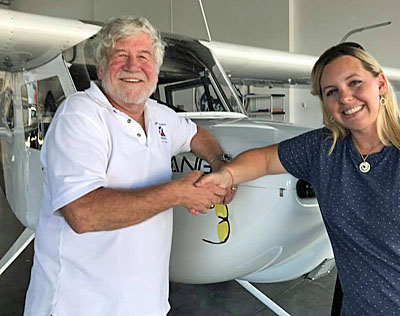 Even more recently, another Vashon LSA was delivered. "We delivered our second Ranger to a local flight school right at our home airport at Paine Field," boasted Amy!
Even more recently, another Vashon LSA was delivered. "We delivered our second Ranger to a local flight school right at our home airport at Paine Field," boasted Amy! 
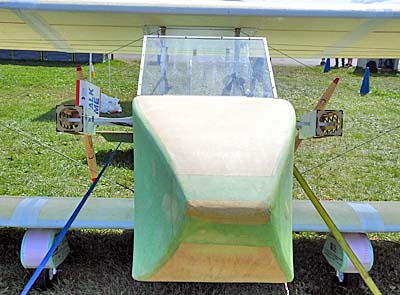 For your enjoyment, here is arguably the most unique airplane I found on the grounds of EAA AirVenture Oshkosh 2018 …and with around 3,000 show planes, that is truly saying something.
This aircraft is made almost entirely of foam sheets that you can buy at Home Depot or Lowe's. It uses two electric motors for thrust. The aircraft is a biplane taildragger. Batteries provide the fuel.
Plus, yes, it actually flies! Catch some of the action in two videos below.
For your enjoyment, here is arguably the most unique airplane I found on the grounds of EAA AirVenture Oshkosh 2018 …and with around 3,000 show planes, that is truly saying something.
This aircraft is made almost entirely of foam sheets that you can buy at Home Depot or Lowe's. It uses two electric motors for thrust. The aircraft is a biplane taildragger. Batteries provide the fuel.
Plus, yes, it actually flies! Catch some of the action in two videos below.
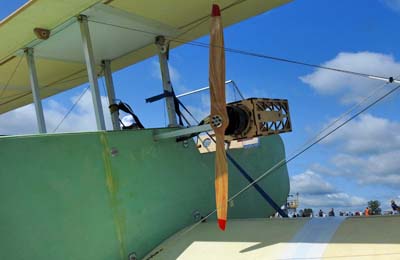 What you are seeing in the nearby photos and videos below is Peter Sripol's man-carrying scratch-built aircraft project.
Peter is a longtime modeler and homebuilder with a popular YouTube channel that boasts more than 650,000 subscribers! He brought his foam homebuilt ultralight project to Oshkosh 2018 and we found it in the ultralight area, now rebadged as the "Fun Fly Zone."
EAA reported, "Peter’s first project was inspired by a visit to
What you are seeing in the nearby photos and videos below is Peter Sripol's man-carrying scratch-built aircraft project.
Peter is a longtime modeler and homebuilder with a popular YouTube channel that boasts more than 650,000 subscribers! He brought his foam homebuilt ultralight project to Oshkosh 2018 and we found it in the ultralight area, now rebadged as the "Fun Fly Zone."
EAA reported, "Peter’s first project was inspired by a visit to 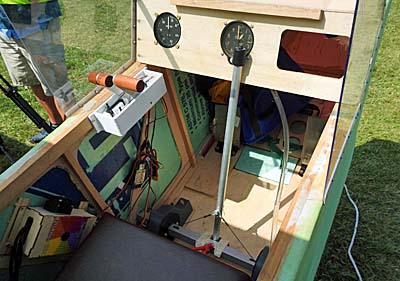 The fuel source is a series of nine batteries driving dual model-airplane engines. Peter built a first ultralight that EAA reported "was minimally planned, in contrast to [this] design, which [he] took time to design in CAD." The first video explains why the motors have the wood constructions holding them along with other design considerations. The second video, Peter's, shows some of the other building effort.
Think what you will of this project but I admire his skill, tenacity, originality, and his… well, "go for it" attitude.
We interviewed Peter at AirVenture Oshkosh 2018. See that below but stay tuned for more…
https://youtu.be/55FOgq7rWDU
Next you can enjoy Peter's video about building the project. It's cleverly done just like his unique aircraft:
https://youtu.be/eNSN6qet1kE
The fuel source is a series of nine batteries driving dual model-airplane engines. Peter built a first ultralight that EAA reported "was minimally planned, in contrast to [this] design, which [he] took time to design in CAD." The first video explains why the motors have the wood constructions holding them along with other design considerations. The second video, Peter's, shows some of the other building effort.
Think what you will of this project but I admire his skill, tenacity, originality, and his… well, "go for it" attitude.
We interviewed Peter at AirVenture Oshkosh 2018. See that below but stay tuned for more…
https://youtu.be/55FOgq7rWDU
Next you can enjoy Peter's video about building the project. It's cleverly done just like his unique aircraft:
https://youtu.be/eNSN6qet1kE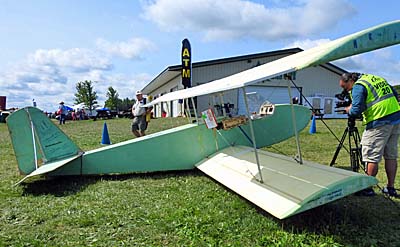
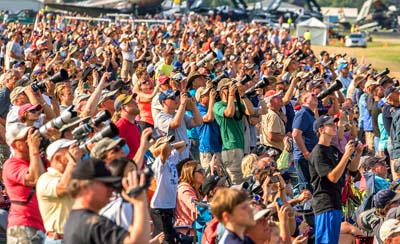
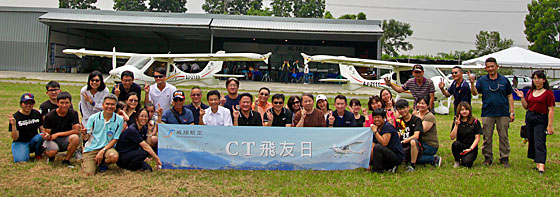 Let me tell you about a specific brand fly-in, for the CTLS produced in China. While small compared to big American events, this was a healthy start. If aviation is to grow in Asia-Pacific, I think events like that hosted by manufacturer AeroJones are key. More of them is needed but here is a worthy start.
In May 2018, AeroJones Aviation hosted a first-time event at their training facility in the south of Taiwan, called Pingtong Saijiain Airport. AeroJones Aviation is the manufacturer of the sophisticated light aircraft called CTLS. The aircraft factory is located in Xiamen, China.
Let me tell you about a specific brand fly-in, for the CTLS produced in China. While small compared to big American events, this was a healthy start. If aviation is to grow in Asia-Pacific, I think events like that hosted by manufacturer AeroJones are key. More of them is needed but here is a worthy start.
In May 2018, AeroJones Aviation hosted a first-time event at their training facility in the south of Taiwan, called Pingtong Saijiain Airport. AeroJones Aviation is the manufacturer of the sophisticated light aircraft called CTLS. The aircraft factory is located in Xiamen, China.
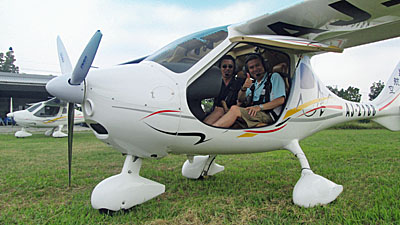 “As promised,
“As promised, 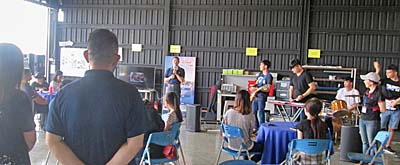 Events like the one AeroJones hosted may be critically important to introduce literally billions of people in the Asian-Pacific region to the idea of flying for fun.
“We were pleased with this first event and the number of people who came to help launch this new idea,” observed Mr. Hsieh Chi-Tai, General Aviation Development Vice President for AeroJones. “Even CT owners that could not fly their aircraft to Pingtong still showed their enthusiasm of flying.” He believes this type of activity will grow as AeroJones Aviation is able to replicate their flight school and pilots club across China in the years ahead.
AeroJones acquired the rights to manufacture the German CTLS aircraft design. The company has since secured approval from the government to build and sell these LSA. China is predicted to become a major market for Light-Sport Aircraft.
Events like the one AeroJones hosted may be critically important to introduce literally billions of people in the Asian-Pacific region to the idea of flying for fun.
“We were pleased with this first event and the number of people who came to help launch this new idea,” observed Mr. Hsieh Chi-Tai, General Aviation Development Vice President for AeroJones. “Even CT owners that could not fly their aircraft to Pingtong still showed their enthusiasm of flying.” He believes this type of activity will grow as AeroJones Aviation is able to replicate their flight school and pilots club across China in the years ahead.
AeroJones acquired the rights to manufacture the German CTLS aircraft design. The company has since secured approval from the government to build and sell these LSA. China is predicted to become a major market for Light-Sport Aircraft.
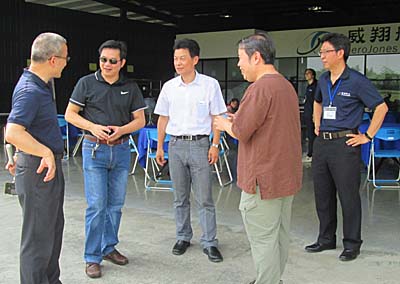 In addition to China and Taiwan, AeroJones Aviation is able to ship fully manufactured CTLS aircraft to other Asia-Pacific countries including Australia, New Zealand, Indonesia, Malaysia, Philippines, Japan, Korea, and Thailand.
Many aviation experts believe China could see rapid growth for aircraft of this type given plans from the central government in China to build hundreds of new airports during the next few years. The Air Sports Federation of China is also planning hundreds of "flying camps" where citizens can learn more about and experience aviation. ASFC personnel attended Oshkosh 2018 and met with groups to learn more about how to pursue their plans.
The Xiamen, China base of AeroJones Aviation includes a manufacturing facility with full fabrication capability. More than 50 highly-trained workers build nearly every part of the airplane in Xiamen. As China may nurture entry level aviation, AeroJones appears destined to be apart of it.
In addition to China and Taiwan, AeroJones Aviation is able to ship fully manufactured CTLS aircraft to other Asia-Pacific countries including Australia, New Zealand, Indonesia, Malaysia, Philippines, Japan, Korea, and Thailand.
Many aviation experts believe China could see rapid growth for aircraft of this type given plans from the central government in China to build hundreds of new airports during the next few years. The Air Sports Federation of China is also planning hundreds of "flying camps" where citizens can learn more about and experience aviation. ASFC personnel attended Oshkosh 2018 and met with groups to learn more about how to pursue their plans.
The Xiamen, China base of AeroJones Aviation includes a manufacturing facility with full fabrication capability. More than 50 highly-trained workers build nearly every part of the airplane in Xiamen. As China may nurture entry level aviation, AeroJones appears destined to be apart of it.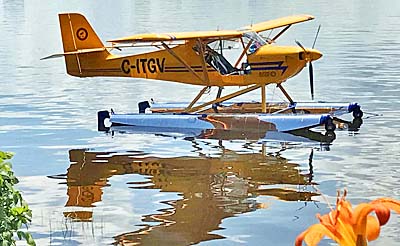 You have more privileges than you may know with your Light-Sport Aircraft.
One of the more misunderstood aspects of FAA's sweeping 2004 Sport Pilot/Light-Sport Aircraft regulation is ELSA or Experimental Light-Sport Aircraft.
Some people call these "kit" LSA. While they can be sold that way, no percentage applies so a manufacturer could call an ELSA a kit by merely having the buyer apply a single decal.
To gain its Special Airworthiness certificate, an ELSA must first be a bolt-for-bolt copy of the manufacturer's Special or fully-built version of LSA. However, once certificated, the owner can begin to make changes on his or her own. They can also become qualified to do all manner of maintenance themselves, assuming they so desire. An Airframe and Powerplant mechanic (A&P) or Light-Sport Repairman – Mechanic (LSR-M) can also work on ELSA as they can SLSA.
You have more privileges than you may know with your Light-Sport Aircraft.
One of the more misunderstood aspects of FAA's sweeping 2004 Sport Pilot/Light-Sport Aircraft regulation is ELSA or Experimental Light-Sport Aircraft.
Some people call these "kit" LSA. While they can be sold that way, no percentage applies so a manufacturer could call an ELSA a kit by merely having the buyer apply a single decal.
To gain its Special Airworthiness certificate, an ELSA must first be a bolt-for-bolt copy of the manufacturer's Special or fully-built version of LSA. However, once certificated, the owner can begin to make changes on his or her own. They can also become qualified to do all manner of maintenance themselves, assuming they so desire. An Airframe and Powerplant mechanic (A&P) or Light-Sport Repairman – Mechanic (LSR-M) can also work on ELSA as they can SLSA.
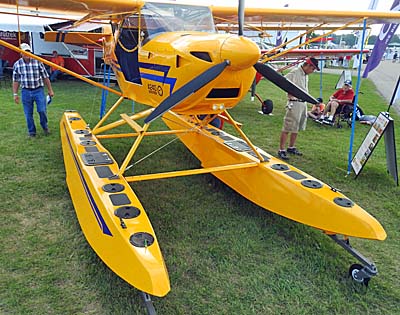
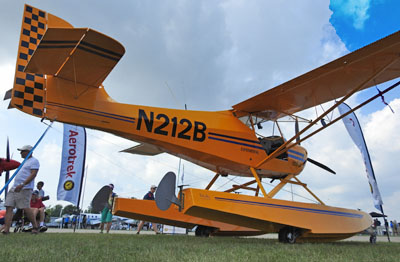 "I deliver on wheels but for $300, an owner can add the float option, which provides mounting brackets attached to specially-reinforced fuselage points.”
Adding floats is then a matter of taking the newly certificated Aerotrek to a qualified installer who can work out the hardware and bracketry to mount straight (no wheels) or amphibious floats. Most sellers know of a few businesses who specialize in such work.
A proper installer does more than supply the hardware and perform the installation. They also do critical measurements and calculations to establish the correct angle of incidence. On floats you cannot rotate for takeoff as you do on a landplane so whomever does this install needs to evaluate each aircraft based on its weight and balance in order to assure the right mounting position.
This specialized skill is one obvious reason why Rollison does not sell on floats and why you must shift to ELSA status after taking delivery of your Aerotrek. To learn more about Aerotrek aircraft through many articles and videos, please
"I deliver on wheels but for $300, an owner can add the float option, which provides mounting brackets attached to specially-reinforced fuselage points.”
Adding floats is then a matter of taking the newly certificated Aerotrek to a qualified installer who can work out the hardware and bracketry to mount straight (no wheels) or amphibious floats. Most sellers know of a few businesses who specialize in such work.
A proper installer does more than supply the hardware and perform the installation. They also do critical measurements and calculations to establish the correct angle of incidence. On floats you cannot rotate for takeoff as you do on a landplane so whomever does this install needs to evaluate each aircraft based on its weight and balance in order to assure the right mounting position.
This specialized skill is one obvious reason why Rollison does not sell on floats and why you must shift to ELSA status after taking delivery of your Aerotrek. To learn more about Aerotrek aircraft through many articles and videos, please 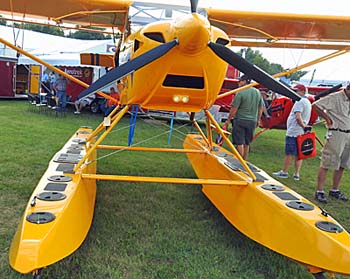
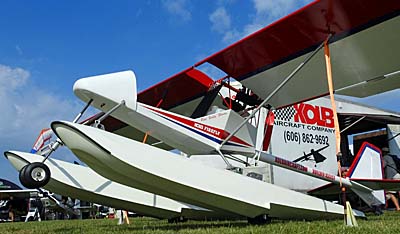 Maybe you never flew a floatplane or seaplane (the latter implying a hull). If that's true you are missing one of the singular pleasures of flying. Landing on water is almost unreal. It seems unlikely but when you find yourself about to touchdown on a lake, you know you have arrived in a way few people in history have ever considered much less achieved.
Alas, the cost of having that dream become reality is substantial. A general aviation floatplane easily runs half a million dollars new, probably much more. Even used, a floatplane is a very costly purchase. Because of their scarcity, a seaplane (with a hull) will cost you even more. Even the most modestly-priced LSA on floats can be a rather expensive proposition.
Along comes Part 103 to save the day. While Light-Sport are affordable compared to, say, a new Cessna 172 on amphibious floats, nothing can compare with Part 103 ultralight vehicles on wheels or floats. In the genuinely affordable space your optimal choice is an ultralight.
You can own a Part 103 ultralight vehicle (not "aircraft") — on floats — for around $30,000. At the price of the average new car, this is a extraordinary value. Is it a fantasy I'm having? No! Here is some reality.
Maybe you never flew a floatplane or seaplane (the latter implying a hull). If that's true you are missing one of the singular pleasures of flying. Landing on water is almost unreal. It seems unlikely but when you find yourself about to touchdown on a lake, you know you have arrived in a way few people in history have ever considered much less achieved.
Alas, the cost of having that dream become reality is substantial. A general aviation floatplane easily runs half a million dollars new, probably much more. Even used, a floatplane is a very costly purchase. Because of their scarcity, a seaplane (with a hull) will cost you even more. Even the most modestly-priced LSA on floats can be a rather expensive proposition.
Along comes Part 103 to save the day. While Light-Sport are affordable compared to, say, a new Cessna 172 on amphibious floats, nothing can compare with Part 103 ultralight vehicles on wheels or floats. In the genuinely affordable space your optimal choice is an ultralight.
You can own a Part 103 ultralight vehicle (not "aircraft") — on floats — for around $30,000. At the price of the average new car, this is a extraordinary value. Is it a fantasy I'm having? No! Here is some reality.
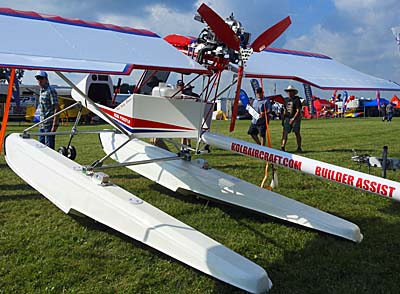 If you must have two seats, FireFly loses out, being designed expressly to be a single seater. Nonetheless, if budget is a primary driver for your airplane purchase, as it is for most people, the FireFly on floats looks to be a highly attractive option.
Kolb's Firefly (
If you must have two seats, FireFly loses out, being designed expressly to be a single seater. Nonetheless, if budget is a primary driver for your airplane purchase, as it is for most people, the FireFly on floats looks to be a highly attractive option.
Kolb's Firefly (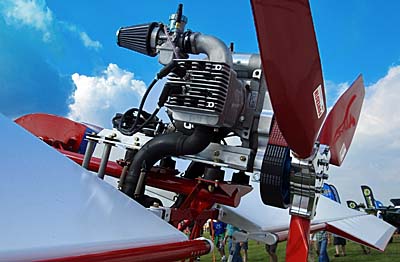
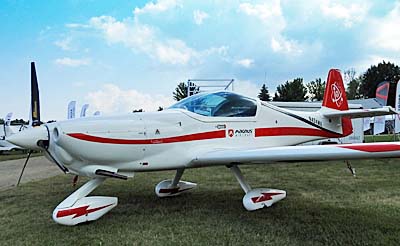 A new-to-Americans Light-Sport Aircraft made its debut showing at AirVenture 2018. Here is the Magnus Aircraft Fusion 212.
It appears another SLSA snuck by my penetrating radar for such achievements. U.S. chief pilot Charlie Snyder told me that the first Fusion earned its Special Airworthinews certificate back in September 2017 thereby joining our
A new-to-Americans Light-Sport Aircraft made its debut showing at AirVenture 2018. Here is the Magnus Aircraft Fusion 212.
It appears another SLSA snuck by my penetrating radar for such achievements. U.S. chief pilot Charlie Snyder told me that the first Fusion earned its Special Airworthinews certificate back in September 2017 thereby joining our 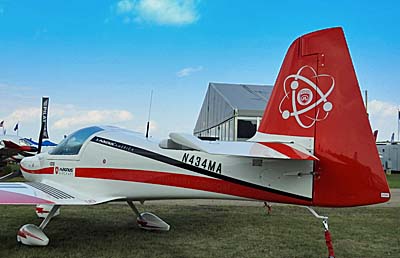 Snyder and Foldesi exhibited their brightly painted low wing that uses mostly carbon fiber construction and a dual taper wing. Full dual controls are available at both seats. Toe brakes on each side guide a castoring nose wheel via differential braking. Rudder pedals are adjustable to accommodate pilot height differences. Leather upholstery is used throughout and cabin heat is provided.
Standard avionics equipment includes a single 10-inch
Snyder and Foldesi exhibited their brightly painted low wing that uses mostly carbon fiber construction and a dual taper wing. Full dual controls are available at both seats. Toe brakes on each side guide a castoring nose wheel via differential braking. Rudder pedals are adjustable to accommodate pilot height differences. Leather upholstery is used throughout and cabin heat is provided.
Standard avionics equipment includes a single 10-inch 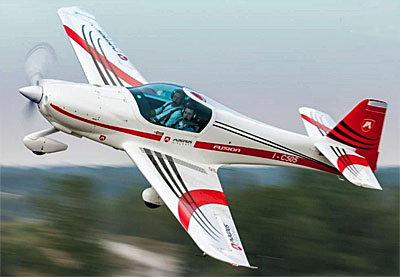 “This low-wing monoplane [has a] symmetrical wing profile that provides it with superb aerobatic capabilities,” said Magnus Aircraft. However, the company advised, "While the aircraft has aerobatic capabilities … as a Normal Category SLSA aircraft, Fusion 212 is presently limited to a maximum of 60 degrees of bank and a maximum pitch up or down of 30 degrees when operating in the United States."
"Fusion 212 is available for special order with 3-5 months of manufacturing lead time. Snyder also said purchase is available from U.S. inventory. A base model Fusion is currently priced from $139,900. Magnus Aircraft, Inc., is licensed by the Hungary-based manufacturer to sell to the American market."
“This low-wing monoplane [has a] symmetrical wing profile that provides it with superb aerobatic capabilities,” said Magnus Aircraft. However, the company advised, "While the aircraft has aerobatic capabilities … as a Normal Category SLSA aircraft, Fusion 212 is presently limited to a maximum of 60 degrees of bank and a maximum pitch up or down of 30 degrees when operating in the United States."
"Fusion 212 is available for special order with 3-5 months of manufacturing lead time. Snyder also said purchase is available from U.S. inventory. A base model Fusion is currently priced from $139,900. Magnus Aircraft, Inc., is licensed by the Hungary-based manufacturer to sell to the American market."
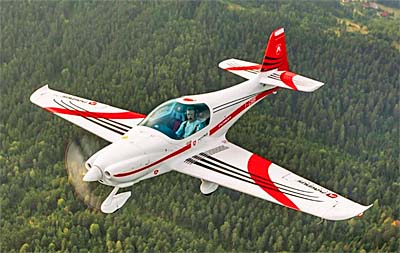
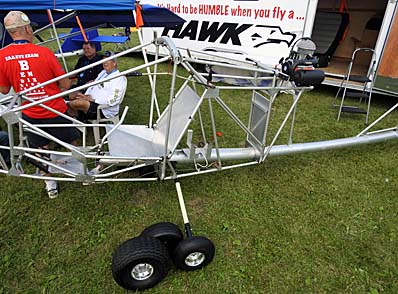
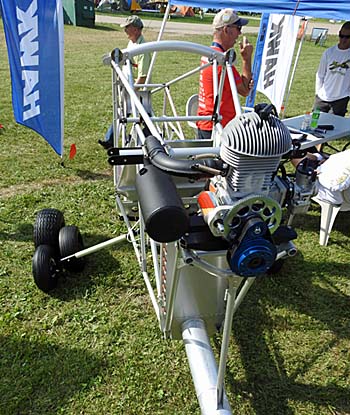 The Santoms will take over production and sales of the single place Hawk models including the Part 103 model and the Ultra, a somewhat beefier model that is built as an Experimental Amateur Built (EAB). My discussion with Bob and LB was encouraging. I was impressed to hear the enthusiasm from father and son for keeping this series of Hawks available.
This is great news for Hawk fans. The two place models Terry Short and son have been assembling look great and will continue. This includes the FAA-accepted LSA model powered by the Rotax 912. Terry is busy enough that the single place models were lower on his to-do list so in stepped the Santoms who will assure the single place models get extra attention.
"We're located on an airport community about 60 miles from Terry's Lake Wales Airport location," said Bob.
This will make it easy on both enterprises as the Santoms will lean on Terry's fabrication abilities as they use many parts that are interchangeable between the single and two-seat models of Hawk.
"We talked to many Hawk enthusiasts at recent shows and we were pleased to hear of genuine interest in the single place models," Bob added.
As you can see by the bare bones Hawk they exhibited, the new operation is just getting underway so a new website is not yet available but you can can
The Santoms will take over production and sales of the single place Hawk models including the Part 103 model and the Ultra, a somewhat beefier model that is built as an Experimental Amateur Built (EAB). My discussion with Bob and LB was encouraging. I was impressed to hear the enthusiasm from father and son for keeping this series of Hawks available.
This is great news for Hawk fans. The two place models Terry Short and son have been assembling look great and will continue. This includes the FAA-accepted LSA model powered by the Rotax 912. Terry is busy enough that the single place models were lower on his to-do list so in stepped the Santoms who will assure the single place models get extra attention.
"We're located on an airport community about 60 miles from Terry's Lake Wales Airport location," said Bob.
This will make it easy on both enterprises as the Santoms will lean on Terry's fabrication abilities as they use many parts that are interchangeable between the single and two-seat models of Hawk.
"We talked to many Hawk enthusiasts at recent shows and we were pleased to hear of genuine interest in the single place models," Bob added.
As you can see by the bare bones Hawk they exhibited, the new operation is just getting underway so a new website is not yet available but you can can 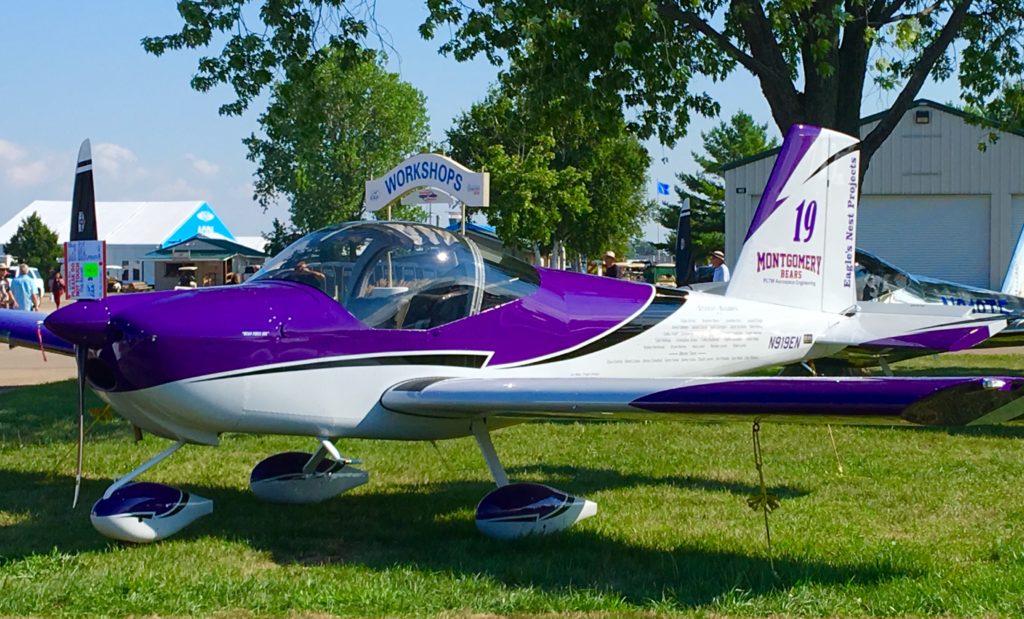 On my first day on Wittman Field here in Oshkosh, Wisconsin, we took the privilege to drive around the grounds and capture video scenes as hundreds of exhibitors arrive and set up their displays.
Despite attending a great many over the years, these events have always amazed me and they still do. With less than a day remaining to set up, it appears a hopeless amount of work remains. Nonetheless, at show after show, by opening gate the place looks quite ready, the crowds flood in, and exhibitors smile as they show off their wares.
On my first day on Wittman Field here in Oshkosh, Wisconsin, we took the privilege to drive around the grounds and capture video scenes as hundreds of exhibitors arrive and set up their displays.
Despite attending a great many over the years, these events have always amazed me and they still do. With less than a day remaining to set up, it appears a hopeless amount of work remains. Nonetheless, at show after show, by opening gate the place looks quite ready, the crowds flood in, and exhibitors smile as they show off their wares.
 We will have lots more to report and will capture many videos for you, but here’s a little five-minute glimpse of what it looks like as the show unfolds before our eyes.
To those who have attended, the scenes may refresh memories. To those that have never been, here’s what you’re missing and why you might want to plan for this in the future.
https://youtu.be/ff28cPg9Qus
We will have lots more to report and will capture many videos for you, but here’s a little five-minute glimpse of what it looks like as the show unfolds before our eyes.
To those who have attended, the scenes may refresh memories. To those that have never been, here’s what you’re missing and why you might want to plan for this in the future.
https://youtu.be/ff28cPg9Qus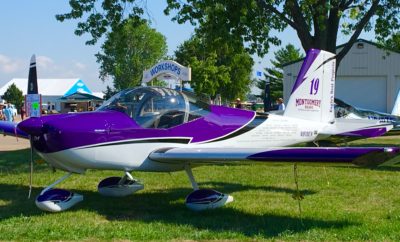
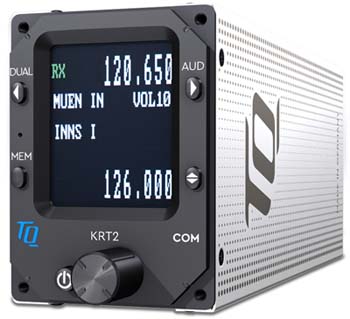 This article has been
This article has been 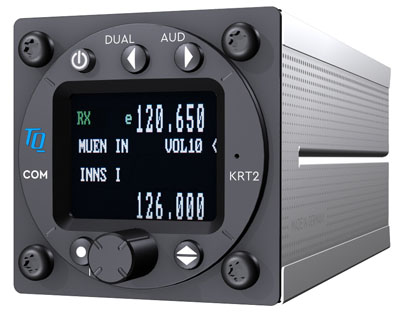
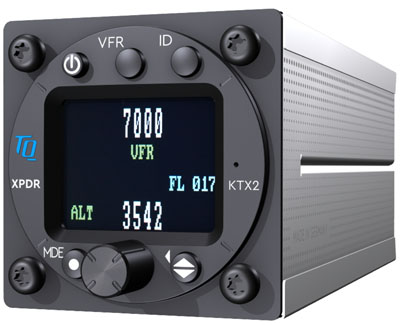 The KRT2 VHF transceiver has already been installed in over 10,000 aircraft across Europe. It features an integrated intercom, a dual watch mode (the pilot can monitor two frequencies at the same time) and it has 100 memory slots for preferred frequencies that tie in with airport identifiers. The radio can be updated with new software at any time. Like the transponder, the KRT2 features digital electronics which make it light, compact and reliable.
TQ will exhibit at
The KRT2 VHF transceiver has already been installed in over 10,000 aircraft across Europe. It features an integrated intercom, a dual watch mode (the pilot can monitor two frequencies at the same time) and it has 100 memory slots for preferred frequencies that tie in with airport identifiers. The radio can be updated with new software at any time. Like the transponder, the KRT2 features digital electronics which make it light, compact and reliable.
TQ will exhibit at 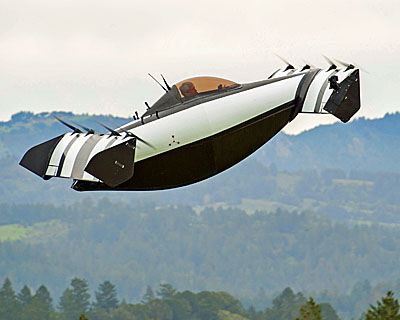 Infotech in Part 103 ultralight vehicles means far more than GPS or even synthetic vision digital screens (imagine an iPad mated to a
Infotech in Part 103 ultralight vehicles means far more than GPS or even synthetic vision digital screens (imagine an iPad mated to a 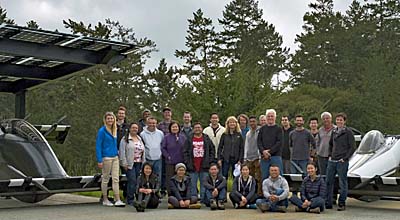 Developers probably use Part 103 because they can do what they want sooner, easier, and not require a pilot's license — or much FAA oversight. Conversely, any aircraft with two or more seats must use another FAR section inviting much more regulation.
"Infotech" is a catchall word suggesting computer technology or software or algorithms. It may be hard to explain precisely but it conveys an image of modern, fast, and cheap. Many fields are being altered by infotech. Why should aviation be any different?
Developers probably use Part 103 because they can do what they want sooner, easier, and not require a pilot's license — or much FAA oversight. Conversely, any aircraft with two or more seats must use another FAR section inviting much more regulation.
"Infotech" is a catchall word suggesting computer technology or software or algorithms. It may be hard to explain precisely but it conveys an image of modern, fast, and cheap. Many fields are being altered by infotech. Why should aviation be any different?
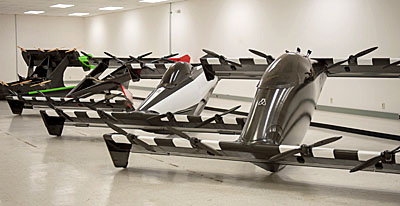
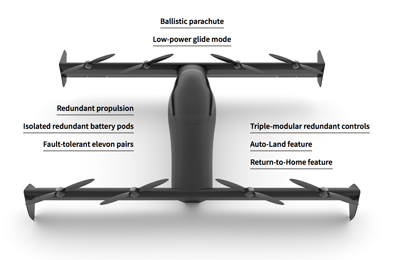 In a CBS News article, Leng was reported saying, “When you press the thumb-stick to climb, you have absolute full control. When you stop in the middle of the air and go off the joystick, the aircraft freezes." These phrases are hardly the way a pilot would say it; perhaps he stated it this way because he was speaking to a non-pilot reporter.
Although BlackFly claims full amphibious capabilities, "It is primarily designed to easily operate from small grassy areas and travel distances of up to 25 miles at a speed of 62 mph." said Opener. It presently has a 25-minute flight endurance. See
In a CBS News article, Leng was reported saying, “When you press the thumb-stick to climb, you have absolute full control. When you stop in the middle of the air and go off the joystick, the aircraft freezes." These phrases are hardly the way a pilot would say it; perhaps he stated it this way because he was speaking to a non-pilot reporter.
Although BlackFly claims full amphibious capabilities, "It is primarily designed to easily operate from small grassy areas and travel distances of up to 25 miles at a speed of 62 mph." said Opener. It presently has a 25-minute flight endurance. See 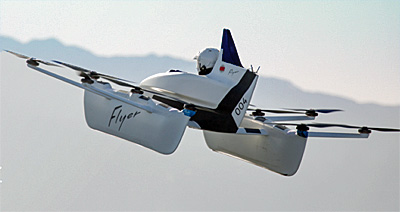
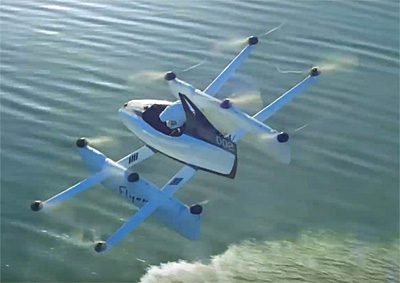
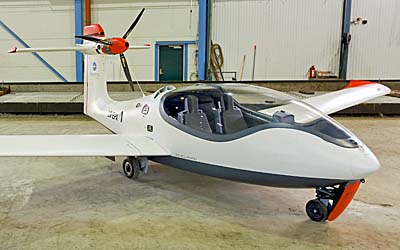 Tested by Eskil Amdal, Equator reportedly accelerated to 70 knots before leaving the ground and flying down the runway at 100 knots at nine meters (about 30 feet, at the edge of ground effect), before landing smoothly. Amdal reported stable flight with good controllability in all axes. Two more flights were performed the following day, further establishing confidence in the flying characteristics.
"The aircraft is a prototype developed by Equator with very limited means since 2010," explained the company. "It can operate from land or water, and with its small electric motor, low float wings and good aerodynamics, promises to rival land planes on performance."
"Equator's core goal to make flying more available to more people, by supplying, green, silent and practical aircraft to the market," added the company. Equator benefits from a very large space inside (nearby photo), and "a simple intuitive cockpit that makes it easy to learn to fly."
Tested by Eskil Amdal, Equator reportedly accelerated to 70 knots before leaving the ground and flying down the runway at 100 knots at nine meters (about 30 feet, at the edge of ground effect), before landing smoothly. Amdal reported stable flight with good controllability in all axes. Two more flights were performed the following day, further establishing confidence in the flying characteristics.
"The aircraft is a prototype developed by Equator with very limited means since 2010," explained the company. "It can operate from land or water, and with its small electric motor, low float wings and good aerodynamics, promises to rival land planes on performance."
"Equator's core goal to make flying more available to more people, by supplying, green, silent and practical aircraft to the market," added the company. Equator benefits from a very large space inside (nearby photo), and "a simple intuitive cockpit that makes it easy to learn to fly."
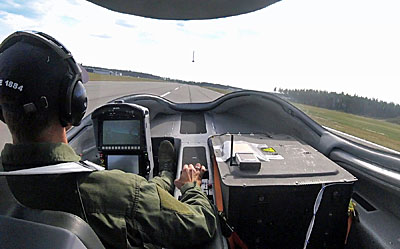
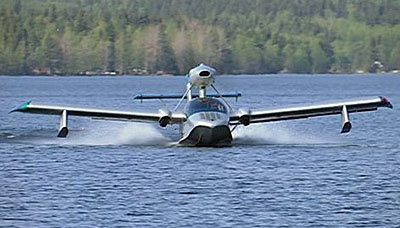 "Speaking at a press conference in Rovaniemi, Finland on Tuesday afternoon, Markku Koivurova, CEO
"Speaking at a press conference in Rovaniemi, Finland on Tuesday afternoon, Markku Koivurova, CEO 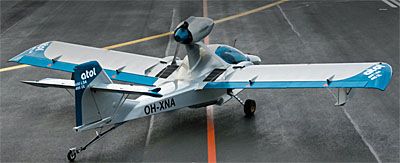 The report continued, "Koivurova said that the accident would not pose a major setback for the small plane manufacturing firm,” while adding that the company will suffer additional loss by taking one customer plane out of the production queue for further testing.
The aircraft retails for 169,000 euros ($199,000 at today's exchange rate). Atol Avian currently has six planes in production. The amphibious side-by-side seating Atol 650 LSA is made out of wood composite with foldable wings. See
The report continued, "Koivurova said that the accident would not pose a major setback for the small plane manufacturing firm,” while adding that the company will suffer additional loss by taking one customer plane out of the production queue for further testing.
The aircraft retails for 169,000 euros ($199,000 at today's exchange rate). Atol Avian currently has six planes in production. The amphibious side-by-side seating Atol 650 LSA is made out of wood composite with foldable wings. See 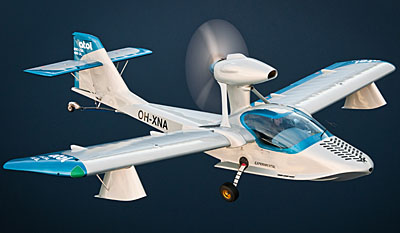
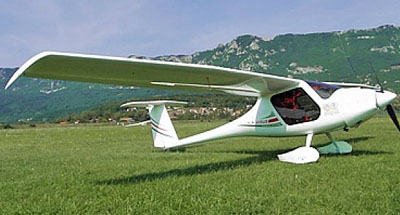 In the world of Light-Sport Aircraft, we have more than 90 manufacturers and 145 Special LSA (
In the world of Light-Sport Aircraft, we have more than 90 manufacturers and 145 Special LSA (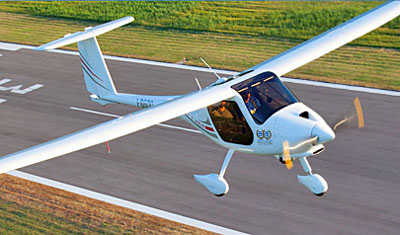 In Virus (yes, I've heard most the jokes about the name) Michael refers to the best seller of the comprehensive Pipistrel line. The reference here is to Virus SW. While the company has succeeded with a number of their other models, Virus SW — the shorter wing span and higher cruise speed variation — is the clear front runner among their production.
In Virus (yes, I've heard most the jokes about the name) Michael refers to the best seller of the comprehensive Pipistrel line. The reference here is to Virus SW. While the company has succeeded with a number of their other models, Virus SW — the shorter wing span and higher cruise speed variation — is the clear front runner among their production.
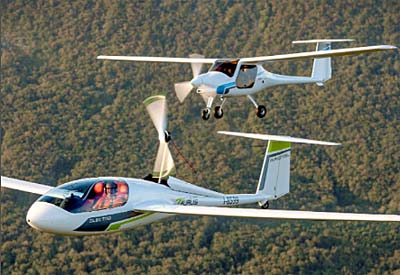 This particular airplane — nicknamed "Mahi" by its owners — is part of the WE! Expedition project, in which two female pilots, a mother and daughter, intend to fly around the world. Pipistrel will no doubt promote that voyage as they've done other global circumnavigation flights.
If you want to check out the Pipistrel line, you have a great chance coming soon.
"This year is going to be our biggest yet," boasted Coates, "with a strong emphasis on electric aircraft and virtual reality flight Training" He said his display will include the following:
This particular airplane — nicknamed "Mahi" by its owners — is part of the WE! Expedition project, in which two female pilots, a mother and daughter, intend to fly around the world. Pipistrel will no doubt promote that voyage as they've done other global circumnavigation flights.
If you want to check out the Pipistrel line, you have a great chance coming soon.
"This year is going to be our biggest yet," boasted Coates, "with a strong emphasis on electric aircraft and virtual reality flight Training" He said his display will include the following:
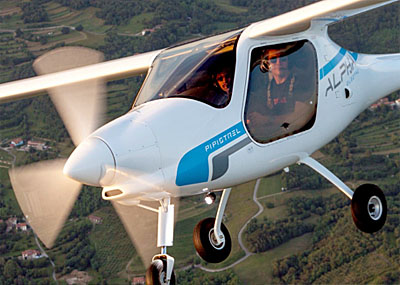 "We will also have 10,000 copies of the new Pipistrel Magazine available for giveaway," said Coates. "This magazine features the full history of Pipistrel along with the different projects we have been involved with in the past 30 years." Such company magazines used to be called "house organs" and Pipistrel's features information about the whole aircraft line.
Pipistrel was established in 1987 as a small backyard workshop and registered as a company in 1989. It started as a producer of powered hang-gliders, but in the 30 years of operation it has grown into an influential, internationally renown company
* A very common mistake is to refer to FAA accepted SLSA as "certified." This is incorrect. SLSA that FAA has approved have demonstrated compliance to ASTM standards and have verified their quality processes and best practices to FAA examiner's satisfaction. They may have proven this via an official FAA audit but they are not "type certified." TC aircraft get "Standard" Airworthiness Certificates. SLSA get "Special" AW Certs. Other countries that use ASTM standards as a basis for approval sometimes add their own "certifications."
"We will also have 10,000 copies of the new Pipistrel Magazine available for giveaway," said Coates. "This magazine features the full history of Pipistrel along with the different projects we have been involved with in the past 30 years." Such company magazines used to be called "house organs" and Pipistrel's features information about the whole aircraft line.
Pipistrel was established in 1987 as a small backyard workshop and registered as a company in 1989. It started as a producer of powered hang-gliders, but in the 30 years of operation it has grown into an influential, internationally renown company
* A very common mistake is to refer to FAA accepted SLSA as "certified." This is incorrect. SLSA that FAA has approved have demonstrated compliance to ASTM standards and have verified their quality processes and best practices to FAA examiner's satisfaction. They may have proven this via an official FAA audit but they are not "type certified." TC aircraft get "Standard" Airworthiness Certificates. SLSA get "Special" AW Certs. Other countries that use ASTM standards as a basis for approval sometimes add their own "certifications."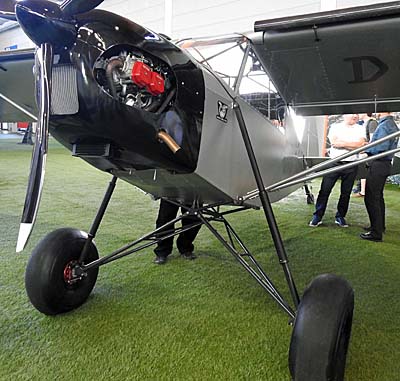 After Aero 2016, we enthusiastically
After Aero 2016, we enthusiastically 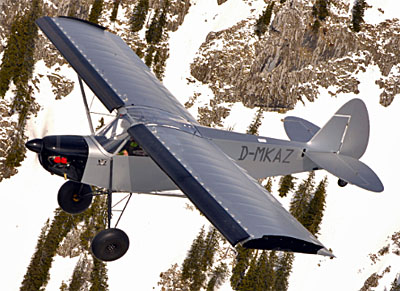 Zlin principal and designer Pascale Russo (in video below), is another of the sleep-deprived creators of cool aircraft. He saw another unfilled niche, and since nature abhors a vacuum, Pascale got busy with a new model. Welcome to Ultra Shock, unveiled at this years wonderful
Zlin principal and designer Pascale Russo (in video below), is another of the sleep-deprived creators of cool aircraft. He saw another unfilled niche, and since nature abhors a vacuum, Pascale got busy with a new model. Welcome to Ultra Shock, unveiled at this years wonderful 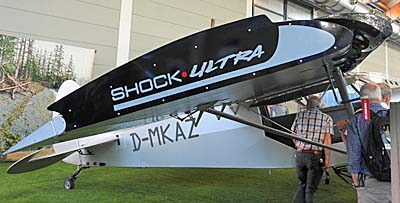 Ultra Shock also retain its strength. "We loaded and drop tested [Ultra Shock] up to 1,000 kilograms (2,200 pounds) from 120 centimeters (about 4 feet) above the ground without any damage." That may not sound like such a high drop height but I've seen test reports and can attest that is a very demanding test, especially at such weight. The design "virtually eliminates the touchdown rebound," Pascale said. "We proceeded from the original Savage Cub-S," Pascale continued, "reinforcing and refining the fuselage framework, increasing … the cockpit height, improving the accessibility, and generally improving ergonomics on board." In other words, he made sure larger pilots will fit well.
Ultra Shock also retain its strength. "We loaded and drop tested [Ultra Shock] up to 1,000 kilograms (2,200 pounds) from 120 centimeters (about 4 feet) above the ground without any damage." That may not sound like such a high drop height but I've seen test reports and can attest that is a very demanding test, especially at such weight. The design "virtually eliminates the touchdown rebound," Pascale said. "We proceeded from the original Savage Cub-S," Pascale continued, "reinforcing and refining the fuselage framework, increasing … the cockpit height, improving the accessibility, and generally improving ergonomics on board." In other words, he made sure larger pilots will fit well.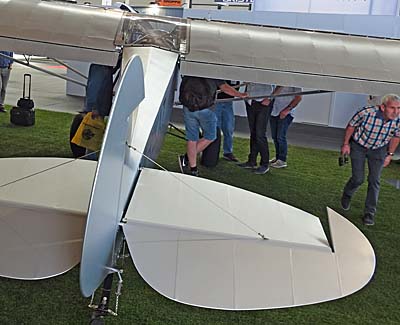 Despite Ultra Shock's lighter weight design, Zlin said the “engine bay can accommodate different engines from the standard
Despite Ultra Shock's lighter weight design, Zlin said the “engine bay can accommodate different engines from the standard 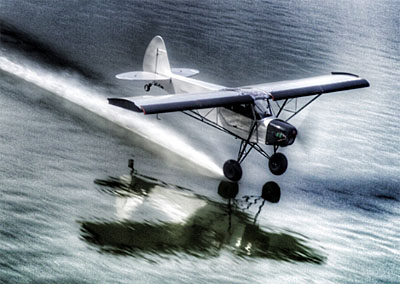 He managed to reach a targeted and demonstrated minimum empty weight — an impressively slim 649 pounds — with a 100 horsepower Rotax 912 with radio and basic instrumentation and a weight savings program which introduced carbon fiber elements, light weight battery, and Oratex fabric covering (a weight-saving material with already colored cloth) in place of classic heat-shrink Dacron, among other choices.It appears he succeeded well. Ultra Shock is significantly lighter than most of the other Cub-clones, which should translate to great performance with the Rotax 912 and reduced overall expense. Zlin is targeting €95,000 (about $115,000) for a well-equipped Ultra Shock but for U.S. pricing and availability, please
He managed to reach a targeted and demonstrated minimum empty weight — an impressively slim 649 pounds — with a 100 horsepower Rotax 912 with radio and basic instrumentation and a weight savings program which introduced carbon fiber elements, light weight battery, and Oratex fabric covering (a weight-saving material with already colored cloth) in place of classic heat-shrink Dacron, among other choices.It appears he succeeded well. Ultra Shock is significantly lighter than most of the other Cub-clones, which should translate to great performance with the Rotax 912 and reduced overall expense. Zlin is targeting €95,000 (about $115,000) for a well-equipped Ultra Shock but for U.S. pricing and availability, please  Many pilots who first set eyes on the SW51, a precisely faithful 70%-scale imitation of the famous North American Aviation P-51 Mustang managed to utter a single word: "WOW!"
Can you blame them? Look at this bird. The shape is classic and the detail is exquisite, finished down to the last rivet to mimic the famous World War II American fighter. Except, it's a kind of fake. I better explain.
We've seen this spectacular execution of Hans Schwöller before. It was then called FK51 and we reported it earlier in
Many pilots who first set eyes on the SW51, a precisely faithful 70%-scale imitation of the famous North American Aviation P-51 Mustang managed to utter a single word: "WOW!"
Can you blame them? Look at this bird. The shape is classic and the detail is exquisite, finished down to the last rivet to mimic the famous World War II American fighter. Except, it's a kind of fake. I better explain.
We've seen this spectacular execution of Hans Schwöller before. It was then called FK51 and we reported it earlier in 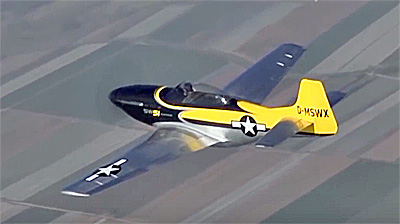 Thanks to his youthful associate, Christian von Kessel, SW51 has been refunded and reenfranchised, bringing it to reality. The earlier producer group stumbled and this amazing construction never reached market.
Can you handle a machine that looks this awesome? As you hear Hans and Christian state in the video, SW51 is easy to take off and land and docile in flight. Early test flight were done by a Lufthansa airline captain (image). In fact, other P-51 clones also boast relatively manageable flight qualities, unlike the North American original that demanded considerable training and good skills, according to those with experience in the powerful machine. (If you have extra time on your hands, you can
Thanks to his youthful associate, Christian von Kessel, SW51 has been refunded and reenfranchised, bringing it to reality. The earlier producer group stumbled and this amazing construction never reached market.
Can you handle a machine that looks this awesome? As you hear Hans and Christian state in the video, SW51 is easy to take off and land and docile in flight. Early test flight were done by a Lufthansa airline captain (image). In fact, other P-51 clones also boast relatively manageable flight qualities, unlike the North American original that demanded considerable training and good skills, according to those with experience in the powerful machine. (If you have extra time on your hands, you can 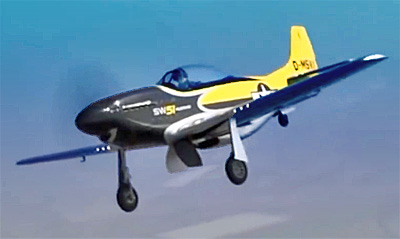 For those ready for the hottest action, you can build the Experimental version and install a Chevy V-8 engine, but that's well beyond the scope of this website. If you're curious, though, ScaleWings says the airframe can take up to 600 horsepower.
The most distinctive quality of SW51 is its tight adherence to the original look, albeit it as a 70%-scale replica of the historic P-51 Mustang. The earlier report referenced above goes into more detail but I must repeat that although this looks remarkably like a riveted structure, it is not. SW51 is a carbon fiber execution of the original so true that a reported 100,000 rivets are molded into the finish. I saw people examining the example at Aero Friedrichshafen run their hand over the skin and they may still not have realized it was something of an illusion. Yes, it's that good!
For those ready for the hottest action, you can build the Experimental version and install a Chevy V-8 engine, but that's well beyond the scope of this website. If you're curious, though, ScaleWings says the airframe can take up to 600 horsepower.
The most distinctive quality of SW51 is its tight adherence to the original look, albeit it as a 70%-scale replica of the historic P-51 Mustang. The earlier report referenced above goes into more detail but I must repeat that although this looks remarkably like a riveted structure, it is not. SW51 is a carbon fiber execution of the original so true that a reported 100,000 rivets are molded into the finish. I saw people examining the example at Aero Friedrichshafen run their hand over the skin and they may still not have realized it was something of an illusion. Yes, it's that good!
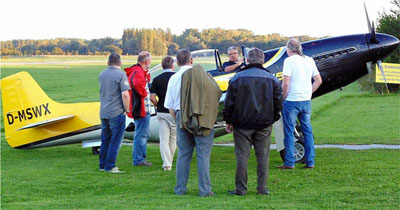
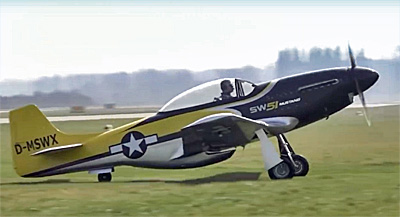 SW 51 also bests the original with detachable outer wing sections that feature an autoconnect design; wing locking connects flaps, ailerons, pitot tube, electric and fuel lines. The developer reports the process takes one person a mere five minutes to complete.
If you want the LSA version, it will be supplied with a fixed gear configuration; the manufacturer understands what is needed for the U.S. market. For those that want the whole Walter Mitty effect with big engine and high speeds,
SW 51 also bests the original with detachable outer wing sections that feature an autoconnect design; wing locking connects flaps, ailerons, pitot tube, electric and fuel lines. The developer reports the process takes one person a mere five minutes to complete.
If you want the LSA version, it will be supplied with a fixed gear configuration; the manufacturer understands what is needed for the U.S. market. For those that want the whole Walter Mitty effect with big engine and high speeds, 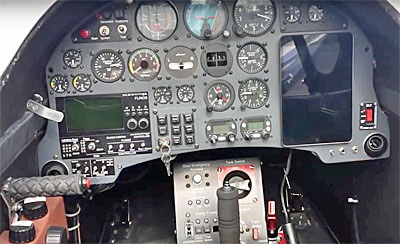 Gulp! Can you afford this beauty? Budgets vary by person, but SW51 is roughly comparable to other higher-end Special LSA. In Europe, the assembled base price is about $182,900, though shipping to the U.S. and other countries will add expense. Yankees wanting the retractable version will indeed have to choose a kit, with the cost starting at around $140,000 for a quick-build version, however, this does not include the engine. A wide range is available if you kit build, up to a very powerful V8 engine. Given what you may be acquiring, those prices are reasonably affordable if you yearn for the full fighter jock sensation of flying your own 70%-scale P-51 Mustang lookalike.
Learn more on our video from
Gulp! Can you afford this beauty? Budgets vary by person, but SW51 is roughly comparable to other higher-end Special LSA. In Europe, the assembled base price is about $182,900, though shipping to the U.S. and other countries will add expense. Yankees wanting the retractable version will indeed have to choose a kit, with the cost starting at around $140,000 for a quick-build version, however, this does not include the engine. A wide range is available if you kit build, up to a very powerful V8 engine. Given what you may be acquiring, those prices are reasonably affordable if you yearn for the full fighter jock sensation of flying your own 70%-scale P-51 Mustang lookalike.
Learn more on our video from 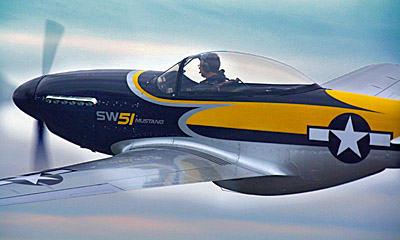
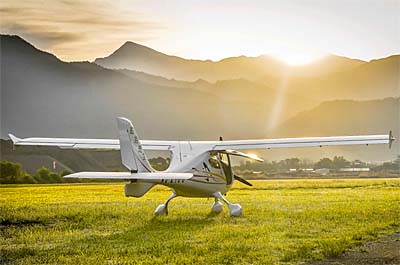 At the Rotax event for journalists allowing reporters like me to fly their new 915 engine (more about that and a
At the Rotax event for journalists allowing reporters like me to fly their new 915 engine (more about that and a  Imagine you are out flying your light aircraft over the countryside. Imagine you have strayed into unfamiliar territory with no recognizable references. Imagine you suffer an engine failure. This is unlikely with our modern great engines, but we all know it happens.
You use your training and experience to select a suitable clearing, and you do your best to put the airplane down without damage. Once accomplished you are someplace on the ground. How do you direct someone to assist you?
Imagine you are out flying your light aircraft over the countryside. Imagine you have strayed into unfamiliar territory with no recognizable references. Imagine you suffer an engine failure. This is unlikely with our modern great engines, but we all know it happens.
You use your training and experience to select a suitable clearing, and you do your best to put the airplane down without damage. Once accomplished you are someplace on the ground. How do you direct someone to assist you?
 The service can be used with a free mobile app or an online map. The developers who created this said, “It can also be built into any other app, platform, or website, with just a few lines of code.”
The service can be used with a free mobile app or an online map. The developers who created this said, “It can also be built into any other app, platform, or website, with just a few lines of code.”
 Years ago, back in the late 1990s, I flew an aircraft called JetFox 97. It resembled the Flightstar of the day and both were modeled on talented European designer Hans Gygax's designs. Along came Light-Sport Aircraft in 2004; years passed with not much word about the increasingly aged JetFox 97.
It's back and looking handsome, cloaked in a carbon fiber fuselage. Since this is an Italian design, it has the beauty we often associate with products from that country. I am describing Alfredo Di Cesare's FX1.
You can
Years ago, back in the late 1990s, I flew an aircraft called JetFox 97. It resembled the Flightstar of the day and both were modeled on talented European designer Hans Gygax's designs. Along came Light-Sport Aircraft in 2004; years passed with not much word about the increasingly aged JetFox 97.
It's back and looking handsome, cloaked in a carbon fiber fuselage. Since this is an Italian design, it has the beauty we often associate with products from that country. I am describing Alfredo Di Cesare's FX1.
You can  While FX1 clearly follows the Jetfox 97 — its overall shape, planform, and layout are very similar — the new model is very different in some ways not obvious in the nearby photos.
To start, FX1 uses a chrome moly steel internal structure, with a beautifully-shaped carbon fiber exterior, and riveted aluminum wings and tail.
No doubt, Alfredo's latest is a dramatic update from the one of two decades back.
Today, as then, the main engine choice is the Rotax 912 ULS carbureted engine but InnovAviation will soon begin offering the Rotax 912iS Sport fuel injected version.
While FX1 clearly follows the Jetfox 97 — its overall shape, planform, and layout are very similar — the new model is very different in some ways not obvious in the nearby photos.
To start, FX1 uses a chrome moly steel internal structure, with a beautifully-shaped carbon fiber exterior, and riveted aluminum wings and tail.
No doubt, Alfredo's latest is a dramatic update from the one of two decades back.
Today, as then, the main engine choice is the Rotax 912 ULS carbureted engine but InnovAviation will soon begin offering the Rotax 912iS Sport fuel injected version.
 We've got the answers and more.
FX1 will make its first showing at
We've got the answers and more.
FX1 will make its first showing at  Look for Deon, Alfredo, FX1, and L600 in the ultralight / light plane area of Oshkosh at the south end of the sprawling airshow grounds (you can take a free tram ride if the hike is too much for you).
Meanwhile, enjoy our video interview and look for Videoman Dave and I at Oshkosh (though we'll be a blur as we zoom back and forth making many more of the videos you love. Specifications are shown below the video.
Look for Deon, Alfredo, FX1, and L600 in the ultralight / light plane area of Oshkosh at the south end of the sprawling airshow grounds (you can take a free tram ride if the hike is too much for you).
Meanwhile, enjoy our video interview and look for Videoman Dave and I at Oshkosh (though we'll be a blur as we zoom back and forth making many more of the videos you love. Specifications are shown below the video.
